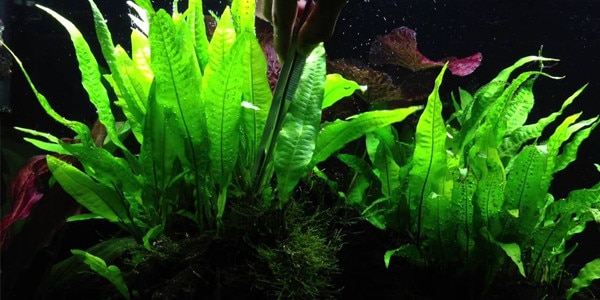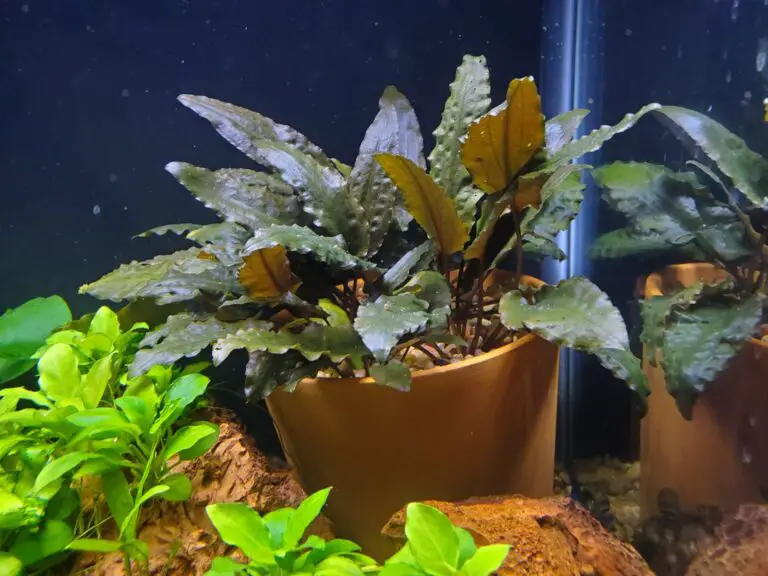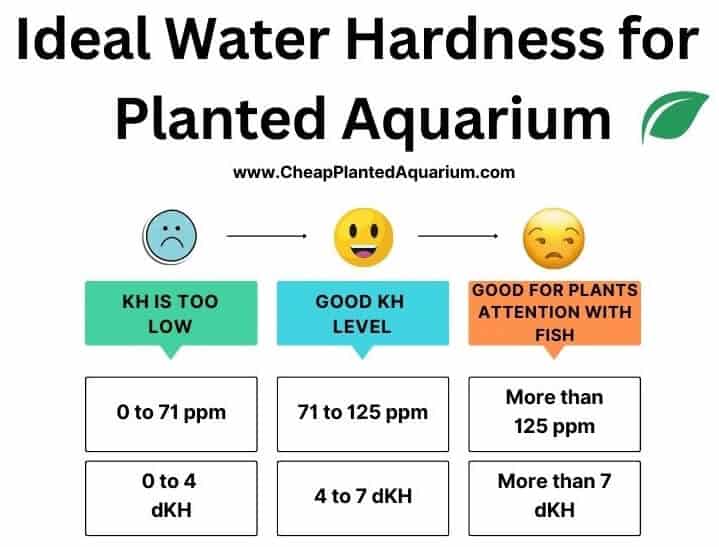How to Add Plants to Aquarium: Expert Tips for Thriving Tanks
To add plants to an aquarium, select suitable aquatic plants and gently anchor them in the substrate. Ensure they receive adequate light and nutrients.
Aquatic plants enhance the beauty and health of an aquarium. They provide oxygen, absorb toxins, and create a natural habitat for fish. Choosing the right plants is crucial for success. Some plants thrive in low light, while others need intense illumination.
Research the specific needs of each plant before purchasing. Clean the plants thoroughly to remove pests. Arrange plants thoughtfully, considering their growth patterns and sizes. Use plant-specific substrates or root tabs to boost growth. Regularly prune and maintain the plants to keep the aquarium looking vibrant. Proper care ensures a flourishing underwater garden.

Credit: www.wikihow.com
Choosing The Right Plants
Adding plants to your aquarium can create a vibrant underwater world. The right plants enhance beauty and promote a healthy ecosystem. Let’s explore how to choose the perfect plants for your aquarium.
Popular Aquarium Plants
Some plants are very popular among aquarium enthusiasts. These plants are easy to care for and look beautiful.
- Anubias: These plants grow slowly and need low light.
- Java Fern: Hardy and great for beginners. They grow in low light.
- Amazon Sword: These tall plants need moderate light and space to spread.
- Cryptocoryne: Known for their varied leaf shapes and colors. They thrive in low light.
- Hornwort: Fast-growing and helps to keep the water clean.
Low-light Vs. High-light Plants
Choosing the right plants also means understanding their light needs. Some plants need low light, while others need high light.
| Plant Type | Light Requirement |
|---|---|
| Anubias | Low-Light |
| Java Fern | Low-Light |
| Amazon Sword | Moderate to High-Light |
| Cryptocoryne | Low-Light |
| Hornwort | Moderate to High-Light |
Low-light plants are perfect for beginners. They need less maintenance and can survive in dim light. High-light plants need more attention and proper lighting.
Choose plants based on your aquarium’s light conditions. Using the right plants ensures a thriving underwater garden.
Preparing The Aquarium
Adding plants to an aquarium can transform its look. It creates a natural and vibrant environment for your fish. Before adding plants, you need to prepare the aquarium. This step ensures a healthy habitat for both plants and fish.
Cleaning And Sterilizing
Clean the aquarium thoroughly. Use warm water and a clean sponge. Avoid using soap or chemicals. These can harm fish and plants. Rinse the tank several times. Make sure there is no residue left.
Sterilize any equipment you will use. Boil them or soak them in a bleach solution. Use one part bleach to nine parts water. Rinse thoroughly after soaking. Let everything dry completely before use.
Setting Up Substrate
Choose a nutrient-rich substrate. This helps plants grow strong. Spread a layer of substrate at the bottom of the tank. It should be about 2-3 inches deep.
Arrange the substrate to slope from back to front. This creates a natural look. It also helps with water flow. Make sure to pack the substrate firmly. This prevents plants from floating up.
Use a mix of substrates for best results. You can use gravel, sand, and soil. Each type has its own benefits. For example:
- Gravel: Good for root development.
- Sand: Helps anchor plants.
- Soil: Provides nutrients.
Adding plants to your aquarium is easy with the right preparation. Clean and sterilize your tank. Set up a nutrient-rich substrate. Your plants will thrive in their new home.
Planting Techniques
Adding plants to your aquarium can be a rewarding experience. Proper planting techniques ensure your aquatic plants thrive. This guide covers two main techniques: planting rooted plants and attaching epiphytes.
Planting Rooted Plants
Rooted plants need a good substrate to anchor their roots. Choose a nutrient-rich substrate like aquarium soil or gravel. Follow these steps:
- Rinse the substrate to remove dust.
- Spread the substrate evenly in the tank.
- Dig small holes with your fingers or a planting tool.
- Place the plant roots into the holes.
- Cover the roots with substrate, leaving the crown exposed.
Make sure the plants are spaced correctly. Here’s a quick spacing guide:
| Plant Type | Spacing (inches) |
|---|---|
| Stem Plants | 1-2 |
| Rosette Plants | 3-4 |
| Carpet Plants | 0.5-1 |
Attaching Epiphytes
Epiphytes are plants that grow on surfaces like rocks or driftwood. They do not need substrate for their roots. Use these steps to attach epiphytes:
- Choose a piece of driftwood or rock.
- Place the plant on the chosen surface.
- Use thread or fishing line to tie the plant in place.
- Ensure the plant is secure but not too tight.
- The plant will attach itself over time.
Popular epiphyte plants include Anubias, Java Fern, and Bucephalandra.
These plants add beauty and diversity to your aquarium. Follow these techniques for healthy, vibrant plants.
:strip_icc()/beautiful-planted-freshwater-aquarium-1196061822-67ec1dbf927b4dadb5ea52cb8cd3bade.jpg)
Credit: www.thesprucepets.com
Lighting Requirements
Adding plants to your aquarium can enhance its beauty and health. Proper lighting is crucial for plant growth. Understanding the types of lights and how to use them is key.
Types Of Aquarium Lights
There are several types of aquarium lights to choose from. Each type has its advantages. Below is a table summarizing the main types:
| Type of Light | Advantages | Best For |
|---|---|---|
| LED Lights | Energy-efficient, long-lasting, adjustable intensity | All plant types |
| Fluorescent Lights | Affordable, good for beginners | Low to medium light plants |
| Metal Halide Lights | High intensity, ideal for deep tanks | High light plants |
Lighting Duration And Intensity
The duration and intensity of light are vital for plant health. Plants need a balance of light and darkness. Too much light can cause algae growth.
Lighting Duration: Most aquarium plants need 8-10 hours of light daily. Use a timer to maintain a consistent schedule.
Lighting Intensity: Light intensity is measured in watts per gallon. Here is a simple guide:
- Low Light: 0.25-0.5 watts per gallon
- Medium Light: 0.5-0.8 watts per gallon
- High Light: 0.8-1.5 watts per gallon
Monitor your plants for signs of light stress. Pale leaves may indicate too much light, while slow growth may suggest too little.
Nutrient Management
Adding plants to your aquarium enhances beauty and ecosystem balance. Proper nutrient management ensures plants thrive. This guide covers essential tips for maintaining nutrients in your aquarium.
Using Fertilizers
Plants need nutrients to grow. Fertilizers provide essential nutrients. Use both liquid and substrate fertilizers. Liquid fertilizers dissolve in water. They supply nutrients directly to plants.
Substrate fertilizers embed in the aquarium gravel. They release nutrients slowly. This helps plants with root systems. Choose fertilizers with macro and micro-nutrients.
Monitor nutrient levels regularly. Use test kits to avoid deficiencies. Adjust fertilizer dosage based on plant needs.
Co2 Injection
Plants use CO2 for photosynthesis. Adding CO2 can boost plant growth. CO2 injection systems are ideal for planted tanks. They maintain stable CO2 levels.
There are different CO2 injection methods. These include pressurized CO2 tanks and DIY yeast setups. Pressurized systems are reliable. They offer precise CO2 control.
DIY yeast setups are cost-effective. They are good for small tanks. Ensure CO2 levels do not fluctuate. Sudden changes can stress fish and plants.
Monitor CO2 levels with a drop checker. Aim for 20-30 ppm of CO2. This range supports healthy plant growth.
| CO2 Injection Method | Best For |
|---|---|
| Pressurized CO2 Tank | Large Tanks |
| DIY Yeast Setup | Small Tanks |
Combining fertilizers and CO2 ensures lush, vibrant plants. Proper nutrient management creates a thriving aquarium environment.
Maintaining Plant Health
Healthy aquarium plants create a beautiful underwater environment. They provide oxygen and help maintain water quality. Proper care ensures plants thrive and remain vibrant.
Pruning And Trimming
Regular pruning and trimming keep plants looking neat. This also promotes growth. Follow these steps:
- Use sharp scissors for clean cuts.
- Trim yellow or brown leaves first.
- Cut stems just above a leaf node.
Prune fast-growing plants more often. This prevents overcrowding. Remove dead or decaying parts to avoid harming other plants.
Identifying Plant Diseases
Early detection of plant diseases is crucial. Spotting signs early can save your plants.
| Symptom | Possible Disease | Action |
|---|---|---|
| Yellow leaves | Nutrient deficiency | Add fertilizer |
| Black spots | Fungal infection | Remove affected parts |
| Holes in leaves | Pest infestation | Use safe pest control |
Healthy plants resist diseases better. Ensure proper lighting, nutrients, and water conditions. Monitor your plants regularly. Quick action can prevent major problems.
Compatible Tank Mates
Choosing the right tank mates is crucial for a healthy aquarium. Some fish are plant-friendly, while others can harm your plants. Let’s explore the best options for your planted tank.
Fish That Are Plant-friendly
- Neon Tetras: These small fish are peaceful and do not harm plants.
- Guppies: Guppies are colorful and enjoy swimming around plants.
- Corydoras Catfish: These bottom dwellers help keep the tank clean.
- Cherry Shrimp: Shrimp love hiding in plants and are great cleaners.
- Otocinclus Catfish: These fish eat algae and leave plants alone.
Avoiding Plant-eating Species
Some fish species are not suitable for planted tanks. They can damage or eat your plants. Here are some fish to avoid:
| Fish Species | Reason to Avoid |
|---|---|
| Goldfish | Goldfish uproot and eat plants. |
| Oscars | Oscars are large and destroy plants. |
| Silver Dollars | These fish eat most plants. |
| Plecos | Plecos can uproot plants while digging. |
Choose the right fish to keep your plants safe and healthy.

Credit: m.youtube.com
Aquascaping Tips
Creating a beautiful aquarium involves more than just adding plants. Aquascaping is the art of arranging aquatic plants and decorations. These tips will help you create a stunning underwater world.
Creating Visual Balance
Visual balance is crucial in aquascaping. It makes your tank look harmonious. Follow these tips for a balanced look:
- Place taller plants at the back.
- Use mid-sized plants in the middle.
- Put short plants at the front.
Use the rule of thirds for placement. Divide your tank into three parts. Place focal points at the intersections.
Incorporating Hardscape Elements
Hardscape elements are non-living items like rocks and wood. They add structure and texture. Follow these tips:
- Choose rocks of different sizes.
- Use driftwood to create natural scenes.
- Arrange hardscape items before adding plants.
Anchor plants to hardscape elements. This helps them stay in place. Use fishing line or plant glue for this.
| Element | Purpose |
|---|---|
| Rocks | Adds structure and depth |
| Driftwood | Creates natural look |
| Plants | Provides color and life |
Remember to maintain clean lines. Avoid cluttering your tank. Less is often more in aquascaping.
Frequently Asked Questions
What Are The Best Plants For Aquariums?
The best plants for aquariums include Java Fern, Anubias, and Amazon Sword. They are hardy and easy to maintain.
Do Aquarium Plants Need Special Lighting?
Yes, aquarium plants need special lighting. LED lights designed for aquariums are ideal for promoting healthy plant growth.
How Do I Anchor Plants In An Aquarium?
To anchor plants, use aquarium-safe substrates or plant weights. You can also tie plants to rocks or driftwood.
Can Aquarium Plants Survive Without Co2?
Many aquarium plants can survive without CO2, but CO2 injection promotes faster growth and healthier plants.
Conclusion
Adding plants to your aquarium enhances its beauty and benefits the fish. Follow these steps for a thriving aquatic ecosystem. Choose the right plants, prepare them properly, and ensure suitable conditions. Your aquarium will flourish, providing a healthy environment for your fish and a stunning visual display.
Happy aquascaping!



